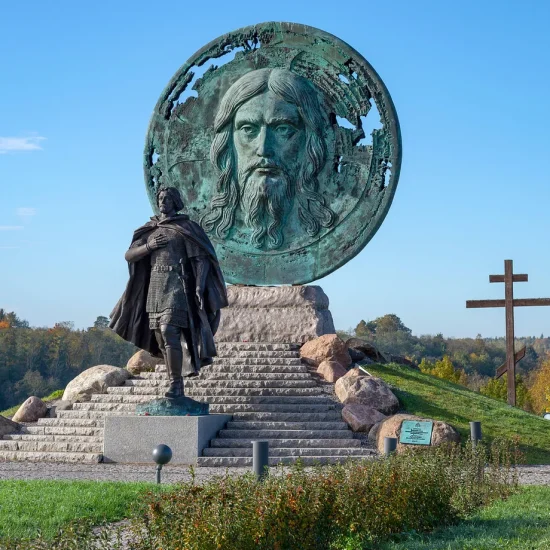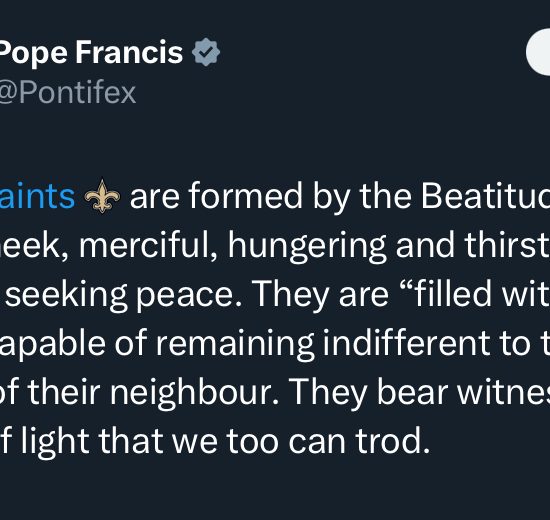

SIMPLICITY, SPIRITUALITY, SERVICE: The Timeless Wisdom of Francis, Clare, and Bonaventure. By Bruce G. Epperly. Cincinnati, Franciscan Media, 2023. Xii + 169 pages.
St. Francis of Assisi and St. Clare are figures who are almost mythical in their persona. Their life stories exude an almost ethereal sensibility. Yet, they are real people, whose life stories and legacy continue to influence the lives of not only Roman Catholics but Christians of all stripes and beyond. The same is true of St. Bonaventure, an important theologian of the thirteenth-century theologian and Franciscan, who contributed a biography of Francis. Even Protestants read their works, sing their hymns, and recite their prayers. This is true even if not all the prayers and hymns attributed to them go back to them. When Cardinal Jorge Mario Bergoglio, a Jesuit Archbishop from Argentina, was elected Pope, he took the name Francis. Many of us assumed that being a Jesuit he had chosen to identify himself with the Jesuit missionary Francis Xavier. But we were wrong. The newly elected Pope had chosen to identify himself with the founder of the Franciscan Order, St. Francis of Assisi. Time has demonstrated that Pope Francis does embody the spirit of Francis of Assisi, which as was true of his namesake, scares a lot of traditional Catholics. The question for us today is what wisdom we might gain from Francis as well as his colleague and friend Clare of Assisi, along with Bonaventure who would serve as a biographer of Francis. This is the question that Bruce Epperly seeks to answer in Simplicity, Spirituality, Service.

Robert D. Cornwall
Bruce Epperly is now a “retired” United Church of Christ pastor, Process theologian, and author of numerous books, many of which focus on spirituality. He finds in Francis, Clare, and Bonaventure people who share with him a common sense of purpose. The focus of Simplicity, Spirituality, Service is on Francis and to a lesser degree his friend, advisor, and colleague, Clare of Assisi. As for Bonaventure, he makes occasional appearances as Epperly draws on his biography of Francis. In his preface, he notes that he was asked by the publishers of his earlier book Walking with Francis of Assisi: From Privilege to Activism to write a sequel to that book. While he struggled to find a path forward, he got spiritual inspiration to write about finding new vocations and beginning new lives by drawing on not only Francis but also Clare and Bonaventure.
The theme of beginning again picks up right away in Chapter 1. In the chapter titled “Beginning Again,” Epperly introduces us to the callings of Francis, Clare, and Bonaventure, reminding us that Francis and Clare gave up lives of privilege to take up lives of radical simplicity. For Francis, the call of God spoke of repairing the church, which at first, he took quite literally. A dozen years younger than Francis, Clare embraced the path of simplicity set forth by Francis, and together they invited others to join them. Bonaventure for his part discovered that he could combine this call to simplicity with high-level theological work. But this is not a history lesson. It is an invitation to discover in these three people guides to our own spiritual transformation.
After introducing the reader to the three figures whose stories provide the focus of the book, in Chapter 2, “The Ever-New God,” Epperly offers a vision of God that reflects both Francis’ understanding of God and Bruce’s Process perspectives. He sees in these three figures an embrace of panentheism, such that “God in all things and all things in God.” It is Bonaventure who most clearly articulated the view Bruce wants us to hear. That is God is “the One whose center is everywhere and whose circumference is nowhere” (p. 16). While Bonaventure is the theologian in this triad, Epperly finds in Francis an exponent of relational spirituality. By that, he suggests that we make a difference to God, even as God makes a difference in our lives.
If the first chapter introduces us to the three primary figures of the book and Chapter 2 speaks of a new vision of God, the third chapter invites us to “[Take] a fresh path with Jesus.” It is here that he brings Jesus into the conversation. He begins by pointing us to Albert Schweizer’s calling to follow Jesus by becoming a medical missionary in Africa. Epperly wants us to know that the life of Jesus thoroughly inspired Francis. He sought to embody Jesus’ lifestyle as closely as he could. Francis and Clare looked at the cross as a sign that they too should take up the sacrificial life. In the course of the chapter, we encounter the Beatitudes and the Lord’s Prayer, inviting us to follow the way of Jesus.
In Chapter 4 Epperly speaks of “Growing in Wisdom and Stature,” something that Jesus accomplished in his early life. Again, Francis found encouragement in Jesus’ life, especially Jesus’ rebellious streak. Most importantly, Epperly draws on the three figures to speak of growing in wisdom, something we are all called to do. If Chapter 4 speaks of growing in wisdom, Chapter 5 speaks of growing through prayer. Here prayer is linked with a spirituality of the senses. As part of the discussion of praying with the senses, Epperly introduces the reader to various forms of prayer that can broaden the spiritual life. Epperly encourages the reader to “Carry the phrase ‘God and all things’ with you throughout the day to keep your vision of God’s glory in every situation. Imagine yourself humbly becoming the image of God in all your relationships” (p. 95).
Francis heard God invite him to repair the church. So, whereas the prior chapters focus on the personal spiritual life and transformation, in chapter 6, Epperly speaks of “Fresh Church.” Here we encounter Francis and Clare serving as “quiet challengers of the Church.” They embodied a prophetic spirit rooted in mysticism. He writes that “Though beatified and declared saints shortly after their deaths, during their lives, they were a source of irritation and concern among powerful prelates, and their simplicity was an implicit critique of institutional religion.” (p. 101). Remember that their order was approved by one of the most powerful Popes of the medieval age, Innocent III. Nevertheless, they called for the church to embrace simplicity and spiritual democracy, things Innocent III was not known to embrace.
In Chapter 7 the discussion turns to creation itself. Francis is known for his embrace of nature. Consider that Pope Francis’ important encyclical on caring for the planet took inspiration from St. Francis’ “Canticle of Creatures.” Thus, for him, “To follow Jesus means to love God’s creatures, great and small” (p. 126). It is a calling that has found resistance in some parts of the populace, but it is an important calling, to care for nature. Francis and Clare not only invite us to participate in the healing of creation, but they also invite us to “Create Peace” (Chapter 9). While the famous Prayer of St. Francis is likely a 20th-century creation, it embodies the spirit of Francis. We can imagine him praying “Let me be an instrument of your Peace.” With that in mind he invites us to consider ways of being at peace with the church and with others, reminding us that in an age of crusades, Francis reached out to the Sultan in Egypt and engaged in interfaith dialogue. He didn’t convert the Sultan, but Francis gained the Muslim leader’s respect. As you might expect Francis sought peace not just with humans but with the earth itself, including all its creatures. Epperly even draws upon the story of how Francis is said to have converted a wolf that terrorized a village. But there is more. While we might not encounter many wolves terrorizing our communities, Epperly uses this chapter to speak of making peace with aging and death, two things we all must face.
Having invited us to follow this pathway set for us by Francis, Clare, and Bonaventure, Epperly closes in Chapter 9 by restating the call to embrace a life that is “always new, always fresh, always beginning again.” The message here is “The path of simplicity and solidarity is part of a greater path, the holy adventure of God, beckoning us to journey forward to God’s shalom” (p. 166).
Those who have read other books by Bruce Epperly know him to be a lively writer. Even if you don’t embrace Process Theology, he has a way of bringing insights drawn from Process thought, but without getting bogged down in philosophical debates. Whatever your background, I think you will find wisdom for life in these chapters. If you are interested in Francis and his companions and followers, Simplicity, Spirituality, Service is a good place to start, though I wish Epperly had focused a bit more on Bonaventure’s vision of following Jesus, perhaps drawing more on other works. Nevertheless, this is an accessible and readable introduction to the spiritual insights of three people who continue to speak more than a millennia after their deaths. So, as Epperly writes in the final chapter of the book: “The path of simplicity and solidarity is part of a greater path, the holy adventure of God, beckoning us to journey forward to God’s shalom” (p. 166).
This review originally appeared on BobCornwall.com.
Robert D. Cornwall is an ordained minister in the Christian Church (Disciples of Christ). Now retired from his ministry at Central Woodward Christian Church (Disciples of Christ) of Troy, Michigan, he serves as Minister-at-Large in Troy. He holds a Ph.D. in Historical Theology from Fuller Theological Seminary and is the author of numerous books including his latest “Second Thoughts about the Second Coming: Understanding the End Times, Our Future, and Christian Hope” coauthored with Ronald J. Allen. His blog Ponderings on a Faith Journey can be found at www.bobcornwall.com.



